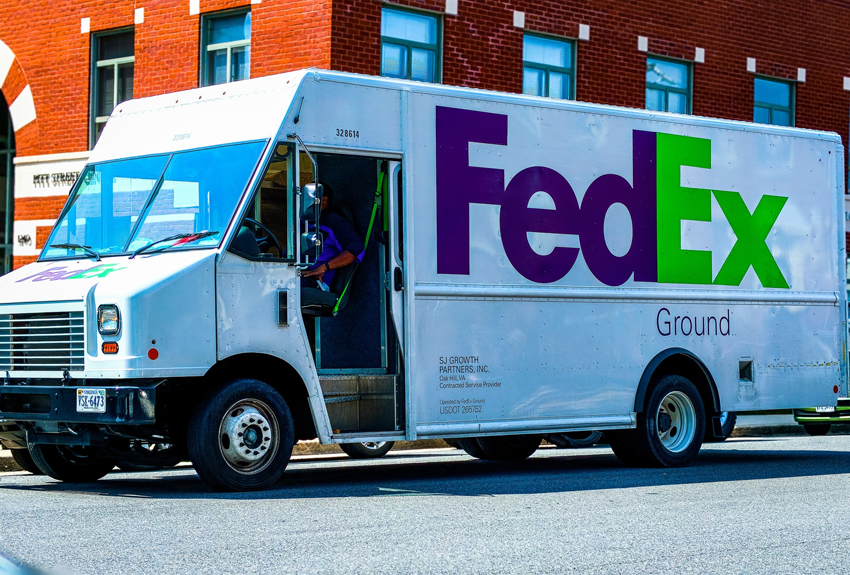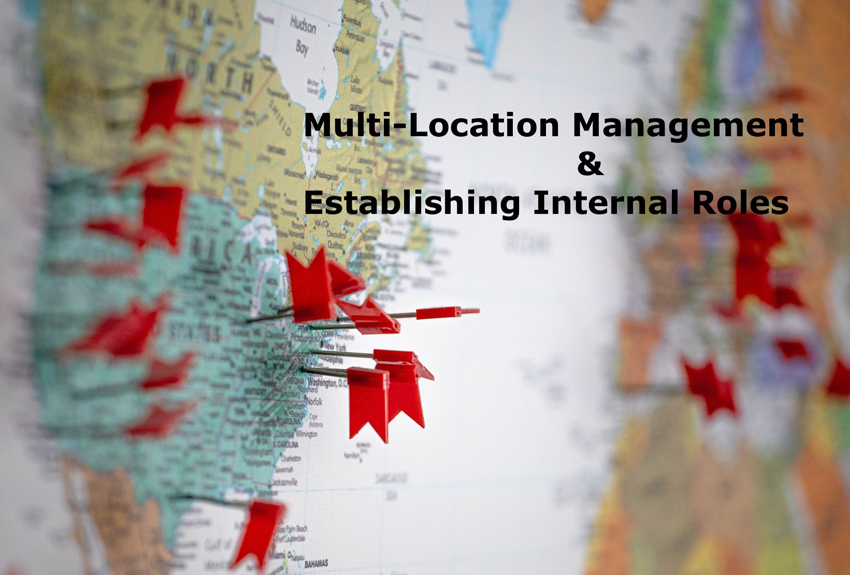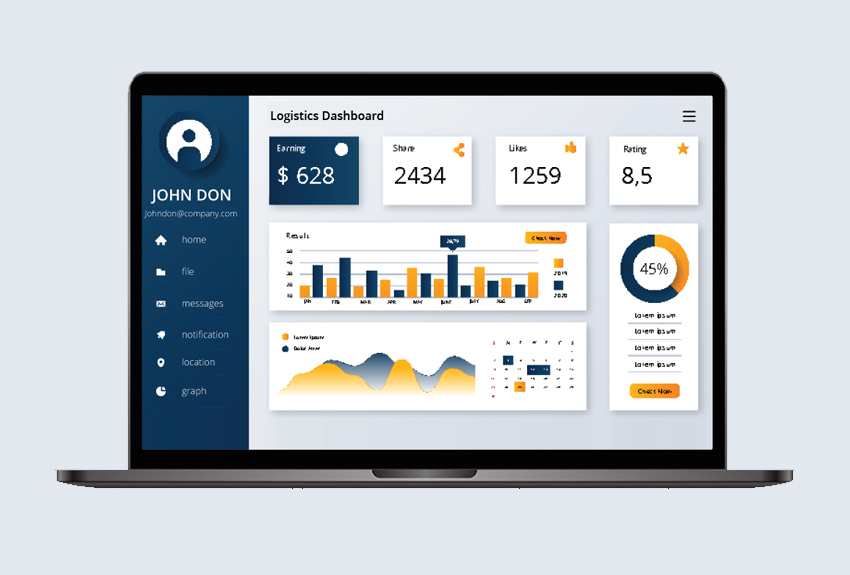When the higher-ups of a company make large-scale decisions with implications for each organizational level, they must do so with a convincing set of data in front of them. The same is especially true for a logistics business. Choosing to open new locations or close old locations, expanding or downsizing, or instituting new policies regarding deliveries, does not happen in a vacuum. Managers and executives must first have a reason to institute changes of any kind. They cannot make substantial business decisions blindly. Not only do they need KPI and profit-loss data, they need high quality data – collected over a substantial period of time, and without the human error or massaging that may come from manual data input into Excel spreadsheets.
Report management is a feature of a custom logistics software that provides key performance metrics at-a-glance.
Simple inputs, for example, inputting how many and which packages a driver has delivered, or how much gas a vehicle or fleet has expended, add up to a clear, persuasive picture. Today, we will look at the ways report management can improve the clarity of a logistics business’s performance metrics.
-
Reporting Based on Day/Month/Year:-
Not all days, weeks or months are created equal in the operations of a logistics business. With reporting features, you can differentiate performance data based on independent portions of time. The benefit of this sort of report organization is that you can tell immediately if your logistics business performs differently based on the implementation of different delivery strategies. For example, if you want to test the effectiveness of a new set of driving routes, you can block off a week, test the driving routes, and be able to see shortly thereafter if your new strategy made any difference to fulfillment rate or profit-loss.
-
Report based on some particular data:-
Logistics businesses are not just package delivery businesses. Some businesses will handle shipping, others will handle disposal. Some logistics warehouses don’t deliver packages, but rather monitor and safeguard inventory. With a custom logistics software, you can define the key variables to follow. These variables could be anything: week-to-week inventory, number of fish delivered in pounds, number of resources that the company safeguards, and so forth.
-
Reporting of profit & loss:-
Many variables go into a profit-loss calculation. And since every company is different, some normal metrics of losses won’t apply to certain businesses. In general, though, companies define profit in terms of revenue: the amount of money they receive through client partnerships, or from investors, or through business deals. Losses also tend to encompass a range of calculations. Lost packages (which must be refunded), budget for gas, payroll, and lawsuits all fall under the category of losses. As long as you input data for both profit and losses as soon as they occur, a custom logistics software can give you profit-loss reporting for any time period automatically.
-
Reporting of Each Location:-
Every station or store is bound to perform differently. If a location is more remote, its delivery routes could end up being longer, and more expensive. If a location is performing well, you can look at what about its operational setup differs from the other location. To get every warehouse or store to perform to a consistent standard, it is essential to have individual reporting on each one. A custom logistics software can handle reports of each location.
-
Fleet reporting:-
As a logistics business, you are keeping track of more than just drivers and inventory: you are thinking about your commercial vehicle fleets as well. A company invests a substantial amount of money into purchasing and registering fleets of vans or trucks. They invest even more into paying for gas on a daily and weekly basis. With a fleet reporting feature, you can keep track of each vehicle individually, or each fleet as a whole: measuring variables like miles traveled, gas spent, and even things like damages or missing vehicles.
-
Employee Reporting:-
We covered driver reporting in an earlier blog on multiple location logistics management (hyperlink), but not all employees are drivers. Some work in warehouses, some work in offices. With employee reporting, you can make incentive systems and HRM much simpler.
Make Your Logistics Business Easier by Automating Reports.
Crunching numbers may be an essential skill for accountants, but in a logistics business you want to take as much human error as possible out of the equation. A custom logistics software specializing in automated reporting – on the level of a specific location, a fleet, an employee, or within a set interval of time – will help your logistics save substantial amounts of time, money and manpower.





